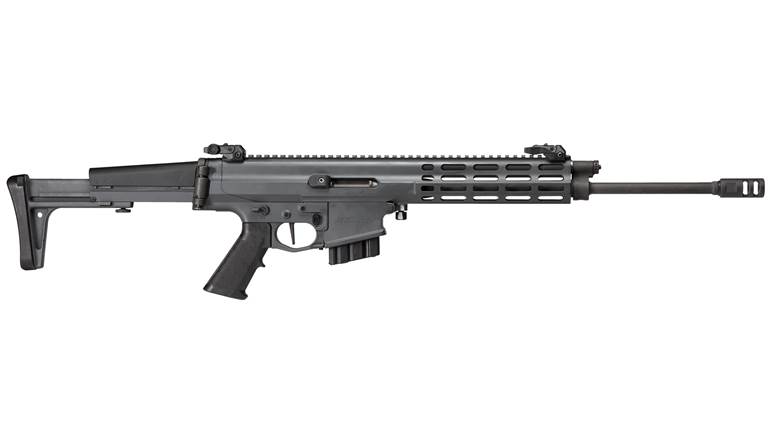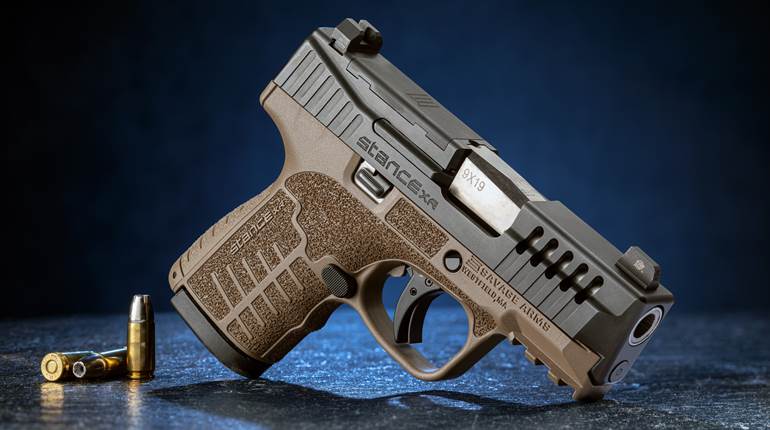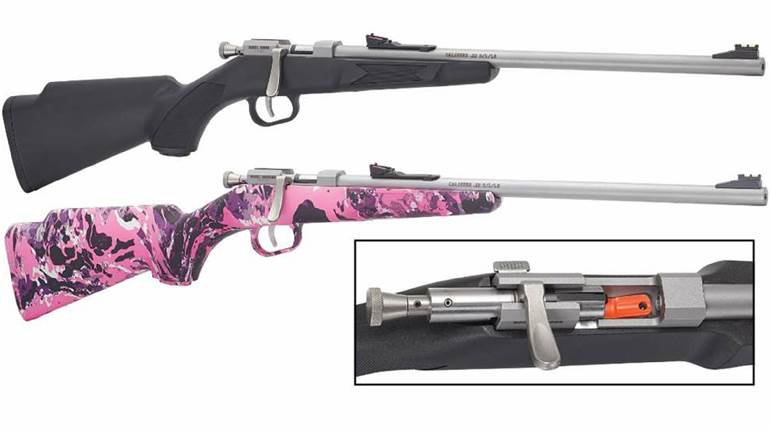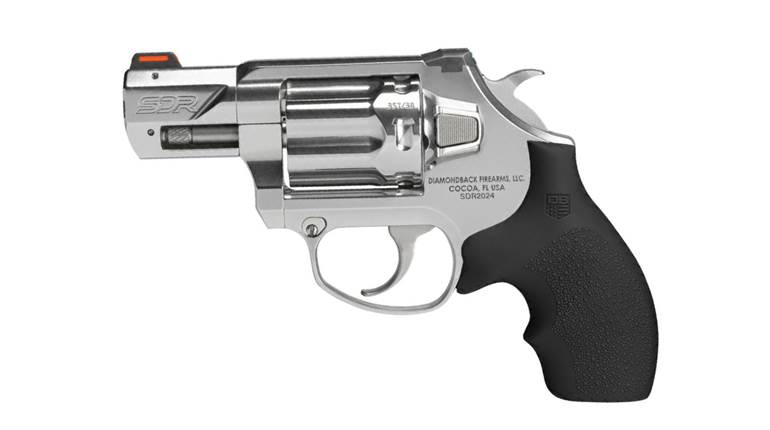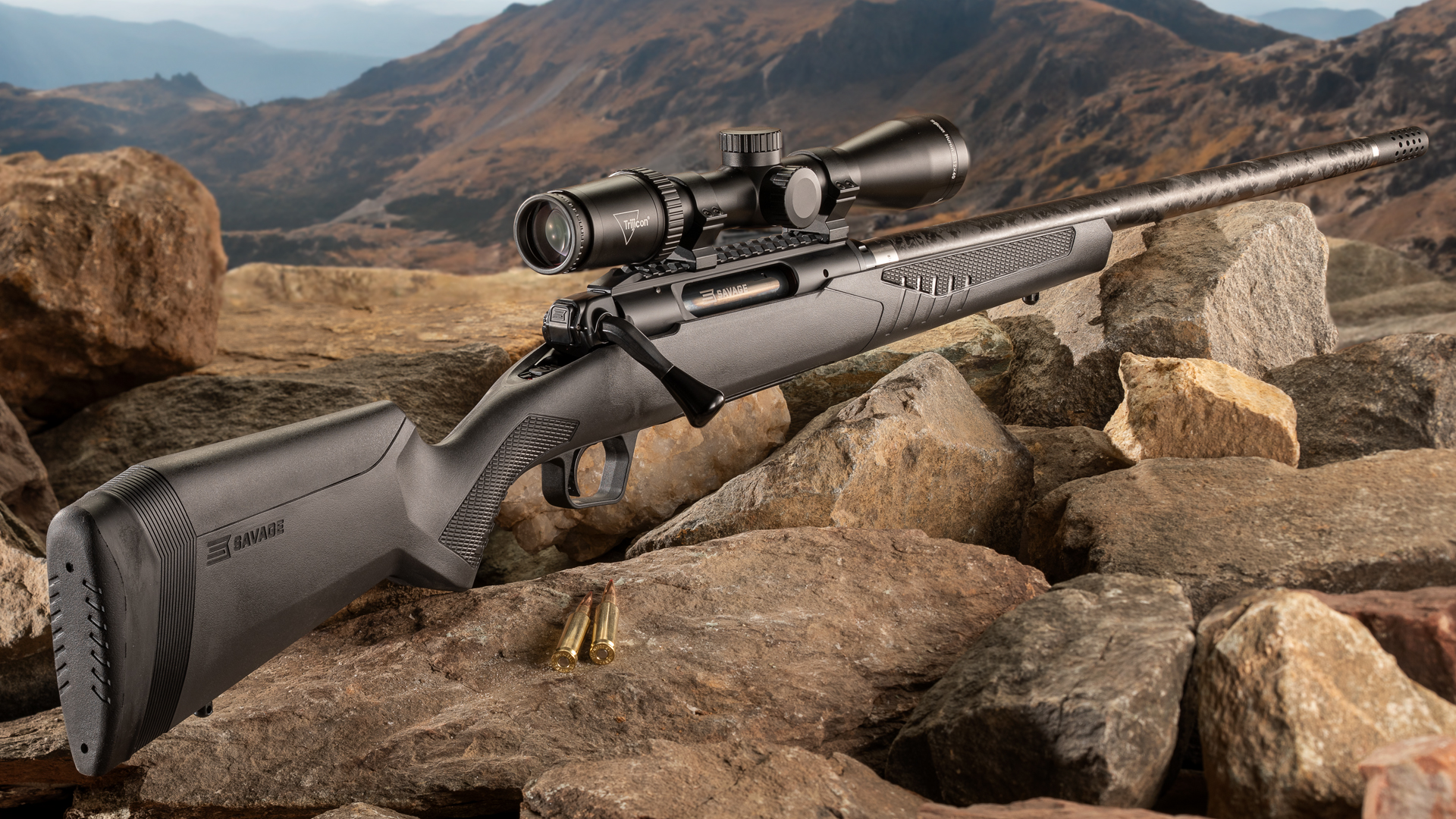
If ever there were a company comfortable breaking with convention, it’s Savage Arms of Westfield, Mass. Essentially, if a new niche is identified, a quality product satisfying that need will be created. Case in point: In January 2021, the armsmaker debuted the Impulse, an American-made straight-pull rifle—one of the few domestically produced centerfire straight-pulls since the M1895 Lee Navy was discontinued long ago. This year, the company expanded the Impulse line to include the subject of this review, the Mountain Hunter—a model tailored toward those who trek, wide and high, in pursuit of big game.
Before delving into what differentiates the Mountain Hunter from other Impulses, let’s cover the fundamental similarity—the straight-pull action. For those unaccustomed with straight-pulls, the Impulse’s bolt will seem odd. The bolt, which has an ambidextrous, removable and multi-positional handle with a teardrop-shaped knob, has a floating, interchangeable head with six 9/32" ball bearings that are integral to lockup. How? As the bolt is pushed forward, where it collects and chambers a round from a detachable box magazine, the plunger rod forces the ball bearings outward into recesses in the barrel’s steel extension, completing lockup.

Once fired, retracting the bolt handle permits the ball bearings to return to their below-flush positions, permitting extraction by way of a Heym SR30-type claw and ejection via a spring-loaded plunger located on the left receiver wall. The receiver itself is made from matte-black-finished aluminum, which is enabled by the bolt locking up into the barrel extension, not the receiver itself. The use of aluminum saves weight, which is desirable on a rifle destined for tasks and treks where ounces count. Integral to the receiver is a one-piece Picatinny rail with 20 m.o.a. of elevation.
The fire controls of the Mountain Hunter consist of an enlarged, two-position, tang-mounted safety and Savage’s renowned AccuTrigger, which is user-adjustable from 1 lb., 8 ozs., to 4 lbs. On the sample rifle, the trigger broke at an average of 3 lbs., 11 ozs., and, as expected, was creep-free. Forward of the magazine well is the Savage-style magazine release lever, while the bolt release is located on the left, rear of the receiver. Lastly, pressing forward on the quick-release button located on the back of the bolt enables it to be pulled rearward for removal of an unfired, chambered round.

Further weight savings are realized with a Proof Research carbon-fiber-wrapped, stainless-steel barrel. The 22" barrel on our 6.5 mm Creedmoor test sample is secured to the receiver via a four-bolt clamp. An appendage on the independent recoil lug works in unison with a recess milled into the rail to prevent side-to-side movement, and tension is applied via Savage’s renowned locking nut. The locking nut is also used to set headspace. Forward of the locking nut, the barrel measured 1.05", while just rearward of the muzzle brake, it was 0.75". The barrel is threaded 5/8x24 TPI and comes standard with a 2.2", 54-port, radial muzzle brake.
The barreled action rests in a gray, synthetic AccuStock featuring a three-dimensional aluminum bedding block that not only lends rigidity, but also ensures consistency, which is paramount to accuracy. Rubber inlays on the fore-end and pistol grip aid purchase. The stock is also equipped with AccuFit technology, which enables the user to customize the rifle with regard to comb height and length of pull. Capping the buttstock is a sticky, ultra-soft recoil pad to help soak up recoil from the 7-lb., 3-oz., rifle. Beneath the stock, you’ll find dual sling swivel studs.

Lastly, feeding the Mountain Hunter is a bi-material magazine. Whereas the body is made from steel, the floorplate and follower are plastic. Magazine capacity varies by chambering—our 6.5 mm Creedmoor had room for four rounds—and only one magazine is included with the rifle.
Testing of the Impulse Mountain Hunter occurred on an unseasonably warm April morning with minimal disturbance from the wind. Over several hours, five consecutive, five-shot groups were fired using the following three loads: Nosler Ballistic Tip 140-grain Ballistic Tip Hunting; Nosler Trophy Grade 142-grain AccuBond Long-Range; and Winchester Deer Season XP 125-grain Extreme Point.
As you’ll observe in the accompanying table, the sample rifle was both accurate and remarkably consistent; in fact, all three hunting loads had nearly identical 25-shot averages of less than 1 m.o.a. Seldom is such steadfastness seen across a range of bullet weights and profiles, as well as velocities, over a single marathon range session. Produced by the Nosler Trophy Grade 142-grain ABLR load, the smallest four-shot group—before increasing to 1.12" due to a fifth-round flier—measured 0.54". With the sample rifle, sub-half-inch, three-shot groups were unexceptional. With that kind of accuracy, you’d be prepared for nearly any hunting shot, that’s for sure.
During testing, there were no failures to feed, fire, extract or eject. Concerning the latter, spent brass was flung into the next shooting lane when the bolt was operated with gusto. There is a Catch-22, however—“babying” the Impulse’s bolt while cycling it will cause you to encounter more resistance. So use a brass-catching device at the range and run it with zest.
For those hunters who need reasonably light weight and long-range accuracy, all from a platform that offers the ability to make fast follow-up shots, the Impulse Mountain Hunter is a natural choice. Granted, it does take a change in mindset from the traditional turnbolt, but, who knows, you might just become a convert.












